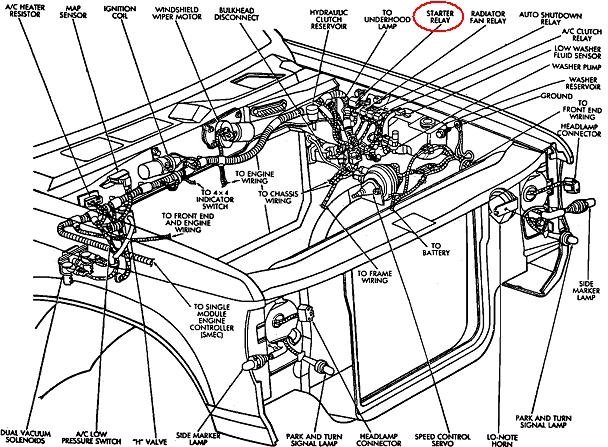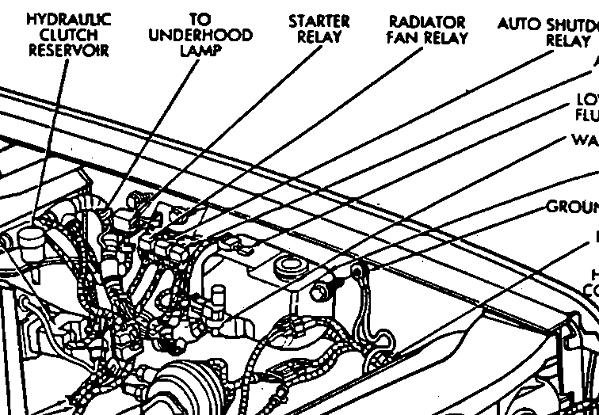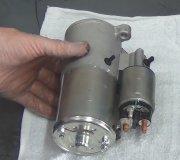Relays are not going to be damaged by shorting the positive post to ground. (The ASD relay has nothing to do with cranking the engine). First listen next to the starter relay or feel it with your fingers to see if it clicks when a helper turns the ignition switch to "crank". If it does not, start with these tests. The cranking system can be broken down into four circuits, each with a corresponding test point at the starter relay. Find that relay, then unplug the connector so we can take the readings there. You can use a digital voltmeter, but for these tests, a test light is faster and can be more accurate. Before we get to testing, check the terminals to be sure they aren't corroded. When you probe a terminal, be careful to just touch it. If the probe is shoved into a terminal, that one can become spread and make intermittent contact later.
Put the test light's ground clip on the battery's negative post or any paint-free point on the body. Probe the black wire in the connector. You must find 12 volts there all the time. Next, probe the yellow/black wire. You must find 12 volts there when a helper turns the ignition switch to the "crank" position. If you find both of those voltages are missing, there is likely a fuse link wire that is burned open.
If those two voltages are okay, move the test light's ground clip to the battery's positive post, then we will check the two remaining circuits for a good ground. Probe the brown wire first. If the test light is bright, that verifies the starter solenoid wire is okay, and the solenoid itself is probably okay. We will follow up more on that later if necessary. Probe the brown/yellow wire. If the test light does not light up, the neutral safety switch is not turning on. You can try shifting between "neutral" and "park" multiple times, but regardless if that works or not, that switch is the suspect. Let me know what you find with these tests.
Images (Click to make bigger)
Wednesday, December 5th, 2018 AT 3:08 PM





